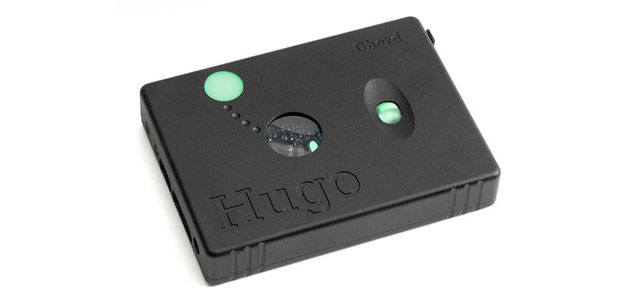SCANZONE
29.04.15 | ISSUE 30
After bombarding us with new gaming tech at GDC last month the IT industry took a different tact this month with Intel releasing several new products including the first Core i7 NUC. However, the biggest product launch by far was the Intel 750 SSD series, the world’s first NVME drives for consumers. NVME is a big deal for SSDs, unlocking far greater speeds, already in excess of one gigabyte per second. GTA V also finally arrived this month on the PC, so we’ve tested a load of graphics cards in the game to find out what hardware you need to make the most of the latest game in the series.

1. Intel unleashes NVME PCI-E SSDs for consumers
When it comes to SSDs, it’s been known for quite a few years that the SATA bus and AHCI specification are real bottlenecks when it comes to performance. Some manufacturers have tried to break through this performance barrier by developing their own SSDs that connect via a PCI-E slot on the motherboard. However, while early PCI-E drives such as the OCZ RevoDrive-series could deliver amazing read and write speeds in specific scenarios, as there was no industry standard for PCI-E storage, these drives required Windows drivers to be accessible and had required their own BIOSes to be bootable. The latter in particular was a real sticking point, as the PCI-E SSD BIOSes added so much time to the POST process that they negated one of the major selling points of SSD storage – faster booting than a HDD.
The solution to all these problems is Non-Volatile Memory Express or NVME for short, which is intended to replace AHCI and has been designed from the ground up to make the most of SSDs. NVME is far more efficient than AHCI, being able to handle far deeper command queues and more tasks in parallel. NVME is natively supported by Windows 7 onwards and most Linux distributions too, meaning no more dodgy drivers or slow-booting BIOSes.
Until now NVME was limited to the enterprise space, with Intel and Samsung producing ludicrously fast drives capable of reading at up 2800MB/sec and writing at up to 2000MB/sec, more than five times faster than a SATA SSD. However, being enterprise grade, these NVME drives are also hideously expensive, and so very hard to justify for a gaming PC or workstation.
Enter stage left the Intel SSD 750, the world’s first NVME drives for the consumer market. While still commanding a significant price premium, the SSD 750-series cost hundreds, rather than thousands of pounds, bringing them within reach of PC enthusiasts. The initial batch of drives comprises four models, a 400GB and a 1.2TB model, available in two form factors; a half-height 4x PCI-E 3.0 card and a 2.5in drive designed to connect to the motherboard via a SFF-8639 connector. The latter only exists on a few server motherboards right now, but nearly all modern PCs will have a 4x PCI-E 3.0 (or faster) slot free on the motherboard to plug an NVME SSD into.
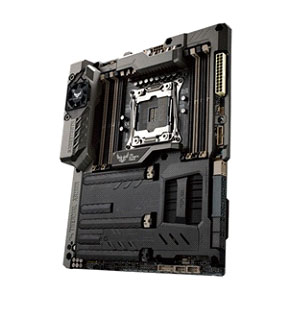
Alternatively you may wish to wait a few weeks as Asus is due to release the X99 Sabertooth TUF motherboard (pictured left), which includes an adaptor that will convert M.2 to SFF-8639. The X99 Sabertooth TUF is due in stock in mid-May with an estimated price of around £285 inc VAT, the same price as an X99-Deluxe.
MSI is also planning on releasing an M.2 to SFF-8639 adaptor (pictured below with an Intel 750 SSD), though unlike Asus you should be able to buy the MSI adaptor by itself and use it with any motherboard that has an M.2 slot with a 4x PCI-E connection. However, at the time of going to press MSI was unable to confirm when the adaptor will be available or what its price will be.
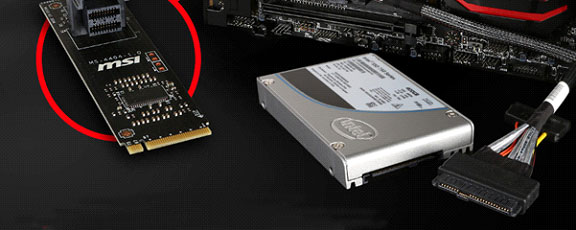
To see what sort of benefits NVME will provide, I benchmarked the 400GB version of the Intel 750 add-in card drive up against the Samsung 850 Pro, the most popular SATA SSD with PC enthusiasts and workstations. The benchmark used, CrystalDiskMark, is afree download that you can run on your own system; just make sure you don’t download the OpenCandy version as this includes pop-up ads that will infect your PC.
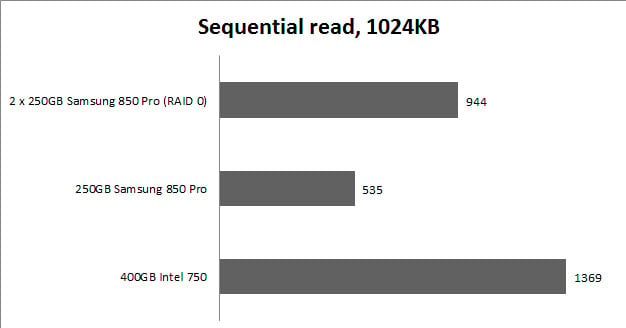
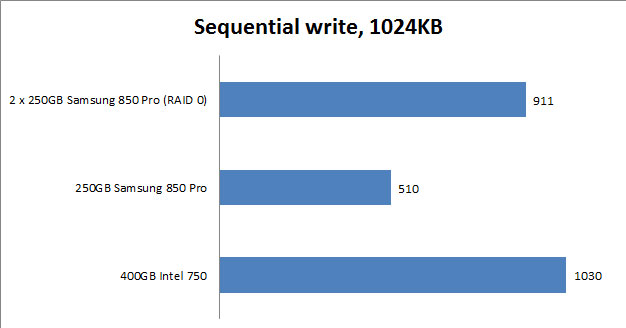
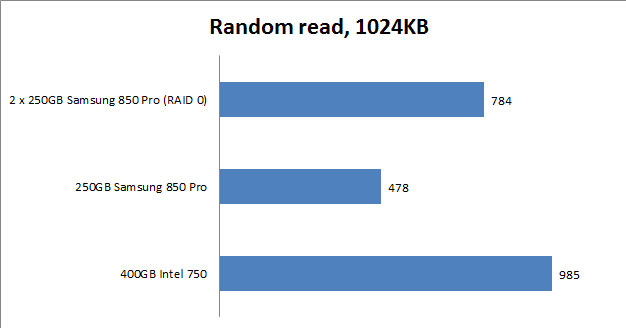
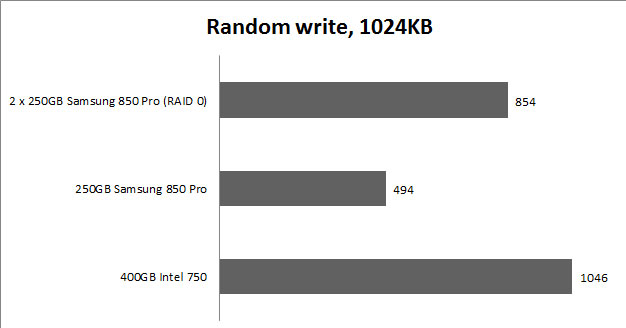

2. Make the most of GTA V on the PC
Although Rockstar didn't manage to keep to its 'late 2014' schedule, on April 14th PC gamers were finally able to take to the streets of Los Santos in GTA V. Praised universally by critics, the PC version of GTA V has racked up an incredible score of 97 on Metacritic, making it one of the highest rated games of recent years. Unlike the disappointing PC version of GTA IV, the PC version of GTA V has several key improvements over the earlier PS4 and Xbox One versions of the game. In terms of eye candy the PC version has far more realistic looking shadows, with more detail and soft edges while anti-aliasing support has also been added along with higher resolution textures. The PC version also has a video maker, allowing you to create your own celluloid adventures in Los Santos.
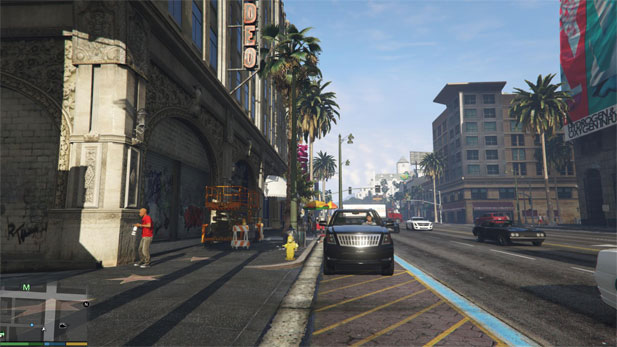
The two screenshots show the significant increase in visual quality between the PC (above) and PS4 (below) version of GTA V, with the PC version having considerably more detailed shadows, lighting and textures.
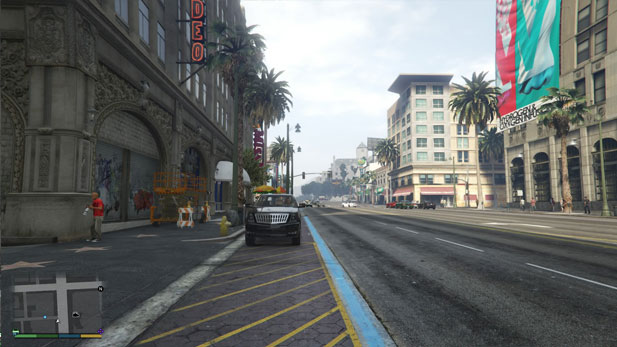
As always though there’s a price to be paid for all that eye candy, so here’s a handy guide to what hardware you’ll need to experience GTA V in all its glory. When gaming on a 1920 x 1080 monitor then we’d recommended at least a GeForce GTX 960 graphics card, which should give you around 50fps at maximum detail settings. Any card less powerful than these will struggle to give you a smooth frame rate in GTA V and you’ll have to start turning down the details settings to get a smooth frame rate.
Dialling up the resolution to 2560 x 1440 means saying goodbye to sub £200 graphics cards if you want a smooth frame rate in GTA V. Instead, you’ll need to opt for graphics cards such as the GeForce GTX 970 or GeForce GTX 980, which should give you around 40fps or 50fps respectively at maximum detail settings.
Finally if you’re taken the plunge and own a 4K monitor then you’ll need to invest in some serious graphics hardware such as a GeForce GTX Titan X, which should give you around 40fps at maximum detail. However, if you’re prepared to drop the details settings down to high then you could get away with a GeForce GTX 980, which should play the game at around 40fps with the settings reduced.
We also tested GTA V on the most popular GeForce cards from the 600-series, the GTX 660, GTX 670 and GTX 680. The GTX 660 didn’t fare too badly at 1920 x 1080, running the game at 32fps. However, this does mean that the game will no doubt run jerkily at some points, so stepping up to the 50fps that a GTX 960 provides is well worth considering, especially as the newer card consumes less power and runs quieter.
If you’ve still got a GTX 670, then playing GTA V at 1920 x 1080 won’t be a problem, as the game ran at a smooth 44fps. However, upping the resolution to 2560 x 1440 dropped the frame rate to a 30fps, which is only borderline playable. The GTX 680 barely fared any better, only running the game at 31fps at 2560 x 1440. So if you own either of these cards and want to enjoy GTA V at this resolution then an upgrade to a GTX 970 or GTX 980 is definitely in order as you could expect to see the game running at a smooth 42 or 53fps respectively.
Scale on all graphs is fps (frames per second), where a higher result means smoother gameplay
Whichever graphics card you do opt for make sure you download the latest NVIDIA 350.12 driver as this includes optimisations for GTA V.
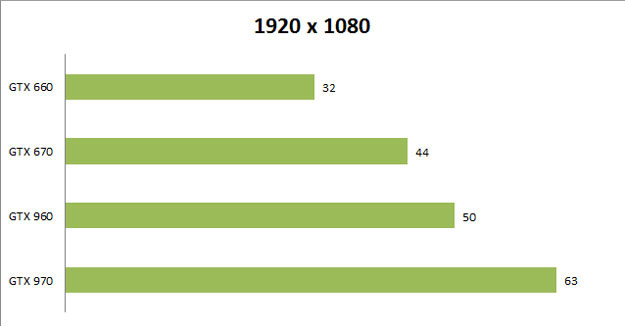
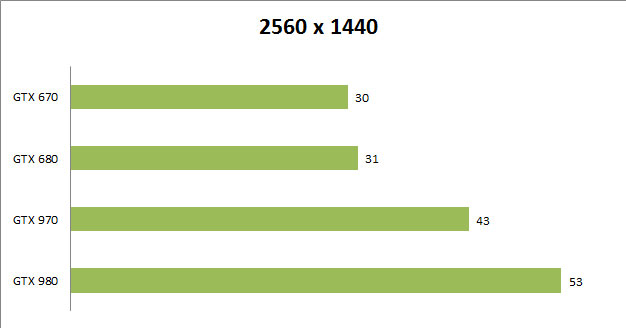
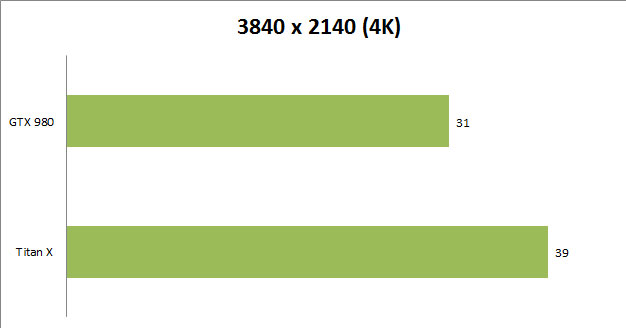

3. Small and powerful 3XS gaming PCs
Not everybody has the space or desire for a full-size desktop PC so our 3XS division has developed a new range of small form factor gaming PCs. There are two families to choose from, the Nanu which use mini-ITX components, so are the smallest gaming PCs available. Available with a wide range specs from as little as £749 all the way up to £2,000 with each system being configurable with dozens of different components and cases.
Alternatively you may wish to consider the Micro series. Using micro-ATX motherboards, the Micro systems are a little larger than the Nanus, but still considerably smaller than a traditional desktop PC. The added room (compared to the Nanu) allows for faster CPUs such as an Intel Core i7 Extreme, bigger overclocks and dual SLI or CrossFire graphics. The Micro range starts of at £729 and scales up to £3,000 and like the Nanu series is completely configurable.
You can check out the new Nanu and Micro small form factor gaming PCs on the 3XS website.

4. ASRock opens the door to mini-ITX X99 systems
Continuing the theme of tiny PCs the crazy cats at ASRock have gone and done what no-one else dared to do and make a mini-ITX motherboard for the Intel X99 platform. This tiny motherboard could potentially pack in an 6 or 8-core Intel Core i7 Extreme processor or even an 18-core Xeon E5-2600 V3 along with 32GB of DDR4, a frankly amazing amount of computing power.
Being a mini-ITX board there’s only room for a single graphics card, but ASRock has also managed to pack in 6 SATA ports, M.2 and SATA Express ports plus WiFi, a staggering feature set for such a tiny board.
Unfortunately at the time of writing I hadn’t been able to test a sample of the X99E-ITX/AC, but as soon as I do I’ll be sure to let you know whether it’s any good or not. In the meantime you can find out more and pre-order the X99E-ITX/AC on the Scan website.

5. Core i7 NUC now available
Earlier this year at the CES show Intel started to drop hints about the first NUC with a Core i7 processor, a hint that has now turned into a real shipping product. Known as the NUC5I7RYHR, it shares the same 3rd generation NUC chassis as the recently launched Broadwell i3 and i5 NUCs, measuring just 115 x 48.7 x 111mm plus an external power brick.
Previously the most powerful NUC had a dual-core Core i5 5300U processor running at 2.3GHz, with a TurboBoost frequency of 2.9GHz. The Core i7 5557U in the NUC5I7RYHR is still a dual-core model, but runs at a much faster 3.1GHz with a maximum TurboBoost frequency of 3.4GHz. The i7 also has more L2 cache than the i5, with 4MB versus 3MB.
The other key difference between the two processors can be found in the integrated graphics, with the i5 having Intel HD Graphics 5500 and the i7 sporting HD Iris Graphics 6100. According to the review on Anandtech the GPU in the i7 NUC is around 25% faster than the i5 NUC, although it’s still not powerful enough to play games smoothly without turning down the detail settings and resolution a long way.
The Core i7 NUC is available to pre-order now on the Scan website for £431.99 inc VAT, a £85 premium over the fastest Core i5 NUC.

6. The best of NAB
Earlier this month Scan’s Pro Video team was glued to its monitors hungry for news flying out of Las Vegas. The NAB (National Association of Broadcasters) holds its annual event in Sin City and following the last few rounds of year-on-year game changing announcements 2015 had a lot to live up to. So did they manage it again this year? Oh yes, with aplomb.
Blackmagic Design is a key company to watch at NAB. Since announcing its ground breaking Cinema Camera 2.5K back in 2012, each year the company raises the bar higher. So it came as no surprise to anyone when it launched three incredible new cameras at this year NAB, a major revision of its industry leading colour correction system DaVinci Resolve and a new range of 12G-SDI mini converters to name just a few of the announcements.
The hottest ticket by far was the unveiling of the URSA Mini, lovingly nicknamed Baby Bear by Scan Pro Video. Blackmagic Design has clearly listened to the needs and wants of professional users to devise a compact and bijou form factor that will suit run-and-gun, documentary, commercials and filmmakers of all persuasions. With increased picture and sound quality and a user friendly design, of the four versions available (EF & PL mount / 4K & 4.6K), it’s the all-new 4608 x 2592 resolution Super35 sensor that excites us the most. Boasting 15 stops of dynamic range, the effective sensor of the 4.6K model, measuring 25.34mm x 14.25mm, means we can expect better oversampling for 4K and UDH and smaller crop factors. There are simply too many features to list. Stay tuned to Scan Pro Video on Twitter for a hands-on report next month.
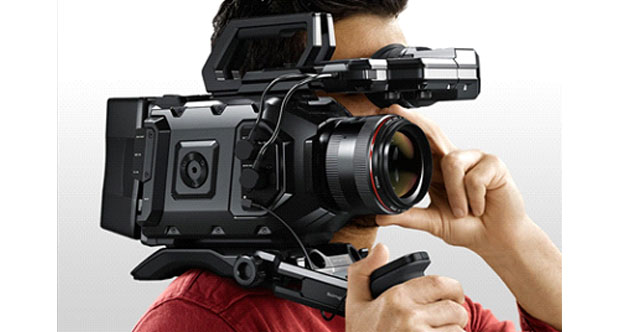
The major update to DaVinci Resolve 12 includes 80 new features which will be available in July for download from the Blackmagic Design website. All the products mentioned are available for pre-order from Scan Pro Video.
Grass Valley EDIUS also made an eye catching NAB announcement. The ‘Edit Anything, Anywhere’ NLE software creator is offering a huge promotion to encourage EDIUS Neo and Pro users to upgrade to EDIUS Pro 7.5. The offer runs until June 30th 2015.
EDIUS is the undisputed king of the cutters when it comes to quick production turnarounds. TourGigs, a concert film technology company based in Austin, Texas, has produced over 50 multi-cam productions of live events. As far as it’s concerned, EDIUS is the only tool when you need speed. As TourGigs co-founder Ty Roberts commented 'None of the other edit systems we tried could handle a multicam edit the way EDIUS can. It’s really no contest. It’s amazing to me that I can see a playback of our edits so quickly.' You can read more about TourGigs and their workflow on the Scan Pro Video website.
Closer to home, Scan Pro Video has developed the 3XS EDIUS HD Plus Turnkey system which includes the Jump upgrade to EDIUS 7.5 and features the Blackmagic Design DeckLink Mini Monitor i/o, dual Iiyama IPS monitors and a dedicated video editing keyboard, the EDIUS Logickeyboard.
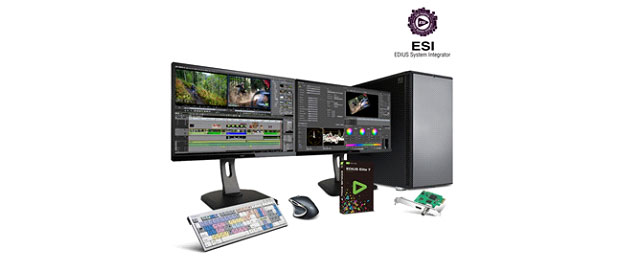
For more NAB news visit theScan Pro Video newsfeed.
Next month we’ll take you on a tour of Scan’s new 4K TV studio.

7. Free extended warranty on EVGA graphics cards
EVGA graphics cards already have one of the best warranties around, being covered for 3 years rather than the more usual 2 for a gaming graphics card. However, if you buy an EVGA GeForce GTX 970 or 980 graphics card from Scan before June 30th and register it with EVGA you’ll get an extra 2 years of warranty, for a total of 5 years, absolutely free. Simply point your web browser to the EVGA website as soon as your card arrives from Scan and register it.

8. New gorgeous looking Fractal Design case
Fractal Design’s range of Define cases have always maintained a classy minimalist look that many other manufacturers are now trying to imitate. With its new Define S however the company has set a new standard for minimalist design, stripping out many of archaic aspects of traditional case design while adding new functionality.
The most striking change is the lack of 5.25in drive bays which is a very sensible move as most PCs really don’t need an optical drive anymore. This change means that the front panel is now a single solid sheet of plastic rather than a flappy door. This change also frees up a huge amount of space inside the case, which can be used for two 140mm fans if air cooling or a 360mm radiator if watercooling. In addition there’s also space to install a giant 420mm radiator in the roof of the case, the holes for which are covered by sound absorbing panels if you don’t want to install a radiator there. As standard the Define S includes two 140mm fans, which should be enough for most PCs.
Despite the removal of the 5.25in bays there’s still plenty of storage capacity in the Define S with space for three 3.5in drives and two 2.5in drives or five 2.5in drives. And as you’d expect from a Define-series case the side panels are padded out with sound absorbing foam, making the Define S much quieter than many other cases.
The gorgeous-looking Define S is available for a very reasonable £64.98 from Scan in two versions, one with a windowed left side panel and one with solid side panels.

9. It’s a wrap!
Thanks for all amazing entries on #FilmDooCreativity. Scan Pro Video supported FilmDoo in its Film Poster Creativity Competition, along with tech, film and design brands such as Adobe and NVIDIA.
The Creativity Competition was a great success with hundreds of entries sent by talented designers from all over the world. The competition kicked off at end of January, closed on April 30th, and in early May, the leading panel of judges from within the design and film industry will choose the top three winning entries and the results will be announced at the Cannes Film Festival.
Here is a reminder of the amazing prizes from the supporters:
• $1,500 (approximately £1,000) voucher from Scan Computers
• A powerful workstation graphics card from NVIDIA
• One year license for Adobe Creative Cloud, which includes a Behance Prosite account
• Paid opportunity to design artwork for film release in 2015;
• $1,500 (approximately £1,000) redeemable against courses from Raindance;
• A signed copy of Little White Lies’ ‘What I Love About Movies’
Weerada Sucharitkul, FilmDoo co-founder says: "The FilmDoo team is thrilled and proud of the competition. Receiving hundreds of original film artworks and witnessing the passion for Cinema from all over the world really is what FilmDoo is about. The panel of judges will have a tough decision to make to select the winners. We would like to thank our supporters who helped us set up and promote the FilmDoo Creativity Competition. We are looking forward to announcing the results at Cannes Film Festival!"
Stay tuned!

10. Velocity competition news
Following on from last year's Velocity 2014 competition, Rock Sound category winners, Day Old Hate have been having a great year so far, not only did their last single "Tides" get playlisted on Radio 1, they have just finished their first UK headline Tour.
Part of thier prize was a studio session with judge Romesh Dodangoda, who has produced records for the likes of Motorhead, Funeral for a Friend and Twin Atlantic. Not only can you hear the finished track from that session "Living Without You", the boys even commisioned a video for the single that you can watch here.

11. Headphone news
Californian based Audeze is renowned for making many of the world's finest headphones, including its flagship (£1599) LCD-3 model. This month sees the release of a new model of headphones, The EL-8, which are retailing for a slightly less eye-watering £599.
Coming in both open and closed back variants, they retain the characteristic transient detail of the LCD range, but they been engineered to be lighter, more portable and easy to drive to a good volume from almost any device.
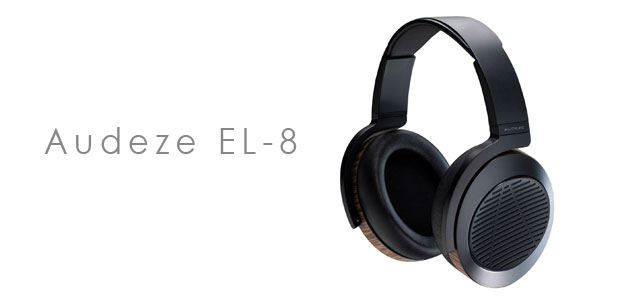
To compliment our extended selection of headphones, Scan Pro Audio has a new range of headphone amps and DACs starting at under a hundred pounds, up to the incredible (but still portable) £1400 Chord Hugo. Headphone amps dont just make the headphones louder, most combined DAC & AMPs will give you more detail, extra low bass and crisper treble than built-in headphone outputs. Both the Chord Hugo and the Creative Sound Blaster E5 are rechargeable and can also be used by Android and iOS devices as an uncompressed DAC, to give you audiophile level listening on the move.
